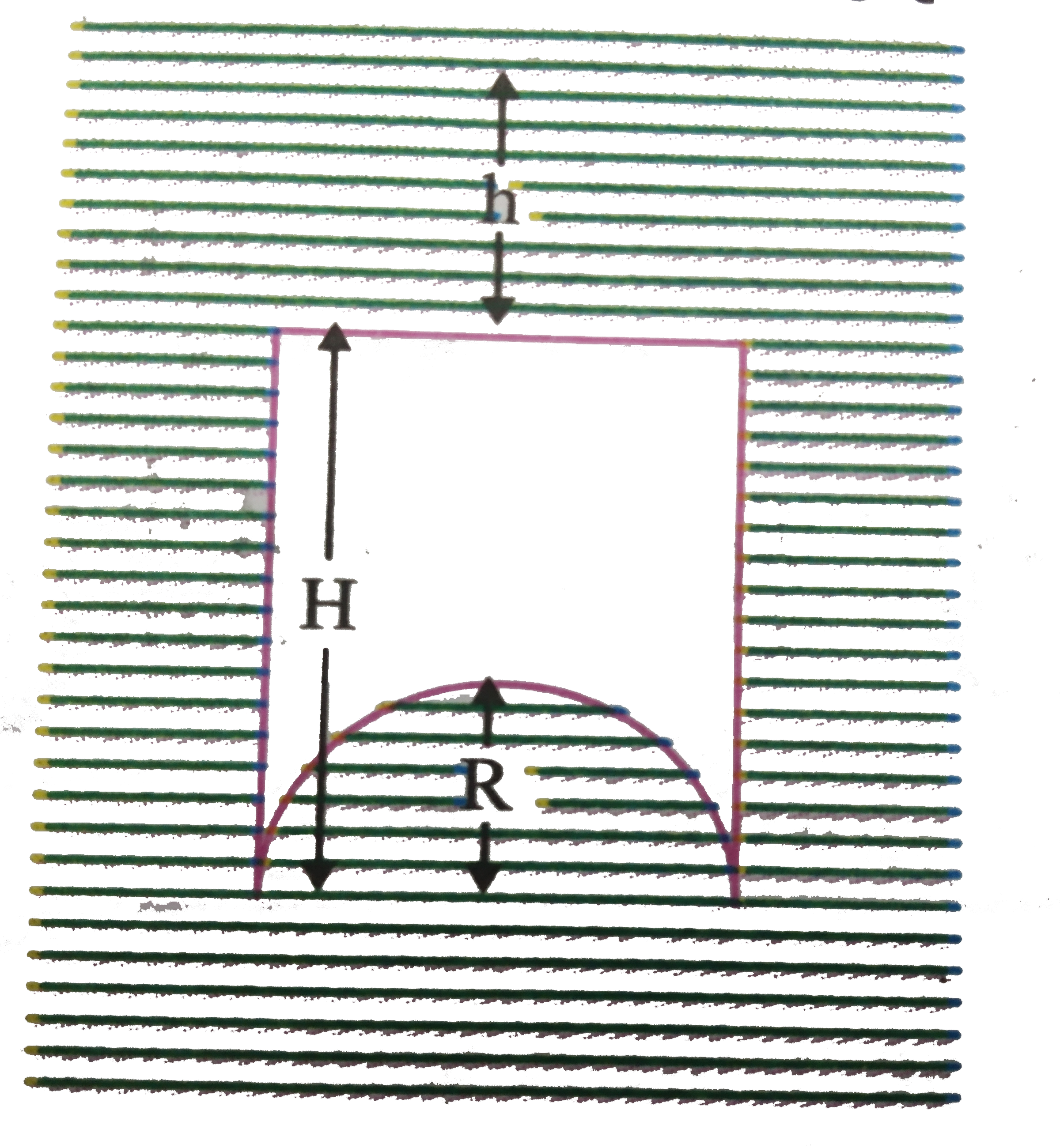A sphere is just immersed in a liquid. Find the ratio of hydrostatic force acting on top and bottom half of the sphere.

The correct Answer is:15
Volume V1 of the super incument liquid of the upper hemisphere.

V1=πR2.R=23πR3=πR33
Then the hydrostatic force acting on the upper hemisphere
h1ρV1g=πR2ρg3
Then F2−F1=Fb or F2=Fb+F1=53πR3ρg
Then F1F2=15
Topper's Solved these Questions
- FLUID MECHANICSBook:CENGAGE PHYSICSChapter:FLUID MECHANICSExercise:Single Correct
Explore 95 Videos
- FLUID MECHANICSBook:CENGAGE PHYSICSChapter:FLUID MECHANICSExercise:Multipe Correct
Explore 15 Videos
- FLUID MECHANICSBook:CENGAGE PHYSICSChapter:FLUID MECHANICSExercise:Exercise 4.4
Explore 10 Videos
- DIMENSIONS & MEASUREMENTBook:CENGAGE PHYSICSChapter:DIMENSIONS & MEASUREMENTExercise:Integer
Explore 2 Videos
- GRAVITATIONBook:CENGAGE PHYSICSChapter:GRAVITATIONExercise:INTEGER_TYPE
Explore 1 Video
Similar Questions
Knowledge Check
A body immersed in a liquid will rise to the surface if the buoyant force acting on it is
Agreater than its actual weightBless than its actual weightCequal to its actual weightDequal to zero
A cylinder of radius R, height H and density simga has a hemispherical cut at its bottom. The top of the cyliner is kept at depth h from the liquid surface. If the density of liquid is ρ, find the hydrostatic force acting on the hemispherical surface of the cylinder.AF2=πR2ρg(H+h−23R)BF2=πR2ρg(H−h+23R)CF2=πR2ρg(H−h−23R)DF2=πR2ρg(H+h+23R)A disc and a solid sphere of same mass and radius roll down an inclined plane. The ratio of thhe friction force acting on the disc and sphere is
A76B54C32Ddepends on angle of inclination
In a sphere is inscribed in a cube, find the ratio of the volume of cube to the volume of the sphere.
View SolutionIf the radius of a sphere is equal to the diameter of a hemisphere. Find the ratio of volume of sphere to that of the hemisphere.
View SolutionAn object is immersed in different liquids. Does same buoyant force acts on the object due to all the liquids?
View SolutionAn object of volume V is immersed in a liquid of density d. Calculate the magnitude of buoyant force acting on the object due to liquid .
View SolutionThe diagram shows the arrangement of three small uniformly charged spheres, A,B and C. The arrow indicate the direction of the electrostatic forces acting between the spheres (for example, the left arrow on sphere A indicates the electrostatic force on sphere A due to sphere B). At least two of the spheres are positively charged. Which sphere, if any, could be negatively charged?

View Solution

